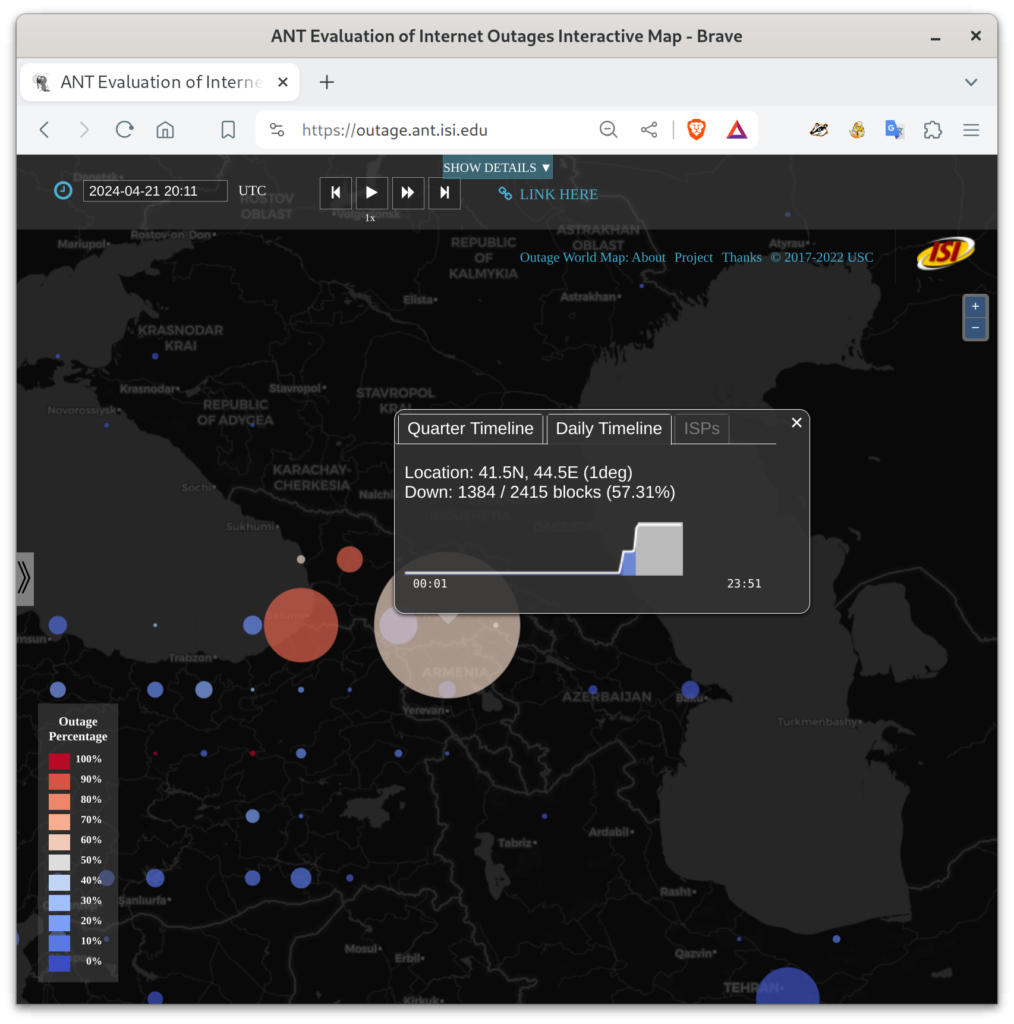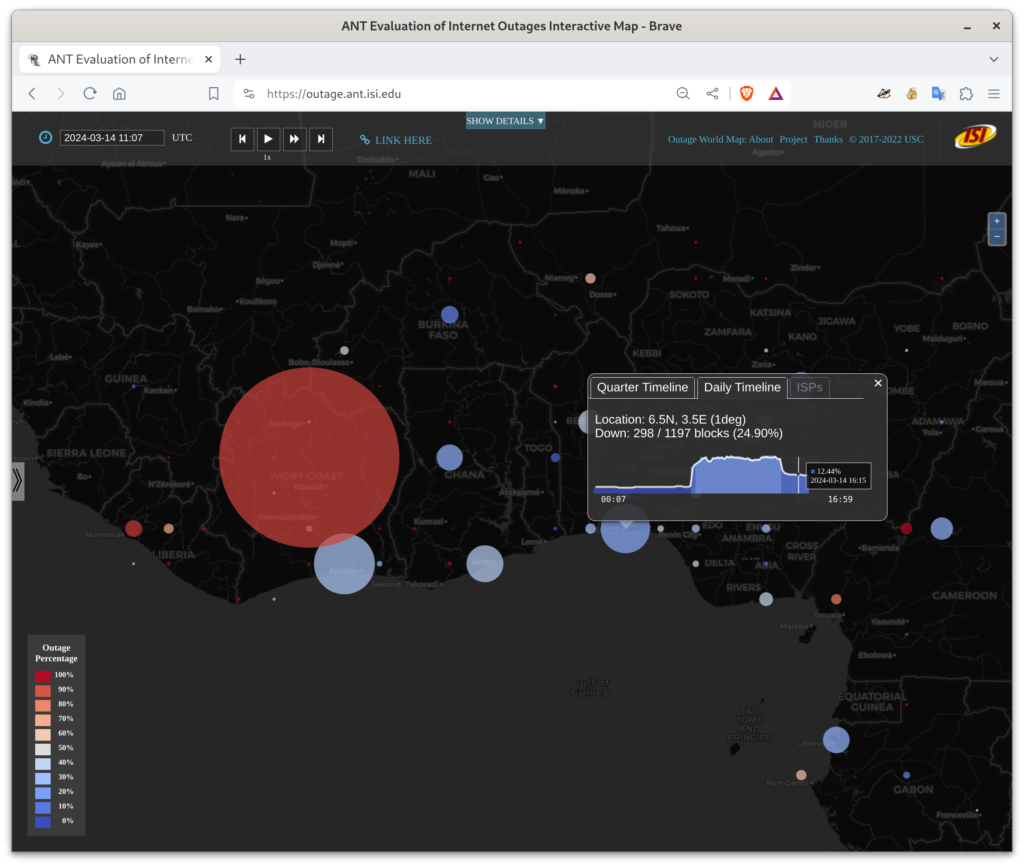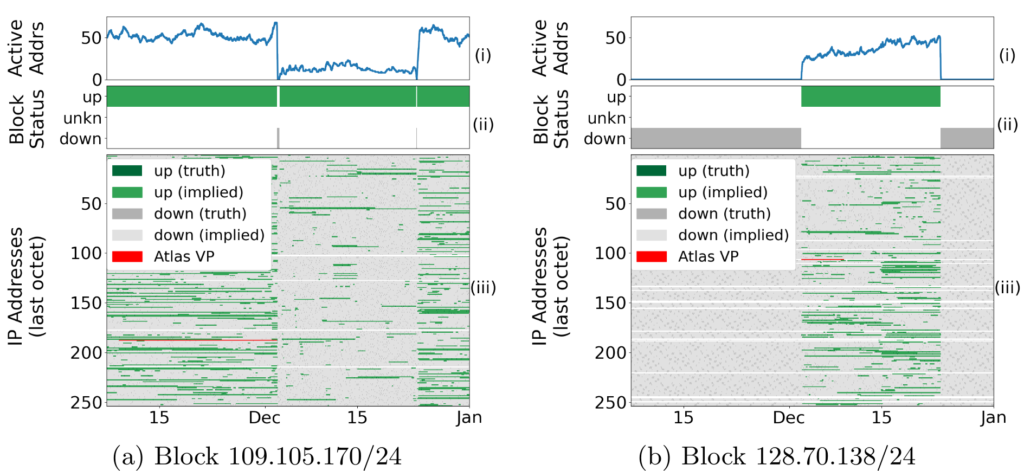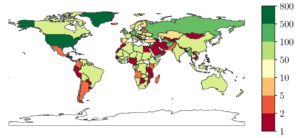Since around 2024-07-18t15:00Z (July 18,21:00 local time), Bangladesh has had a major,country-wide Internet outage. As of t17:30Z some regions see 97% unreachability. This country-wide outage seems to be in response to civil unrest and protests.
Here’s the view from Trinocular outage detection as of 17:30Z:

We wish the best for the people of Bangladesh during this unrest.
Update July 19 morning: A day after Bangladesh’s Internet connectivity first went down, it remains nearly completely stopped. Here is our view of Bangladeshi connectivity at 2024-07-19t14:40Z (20:40 local time there):
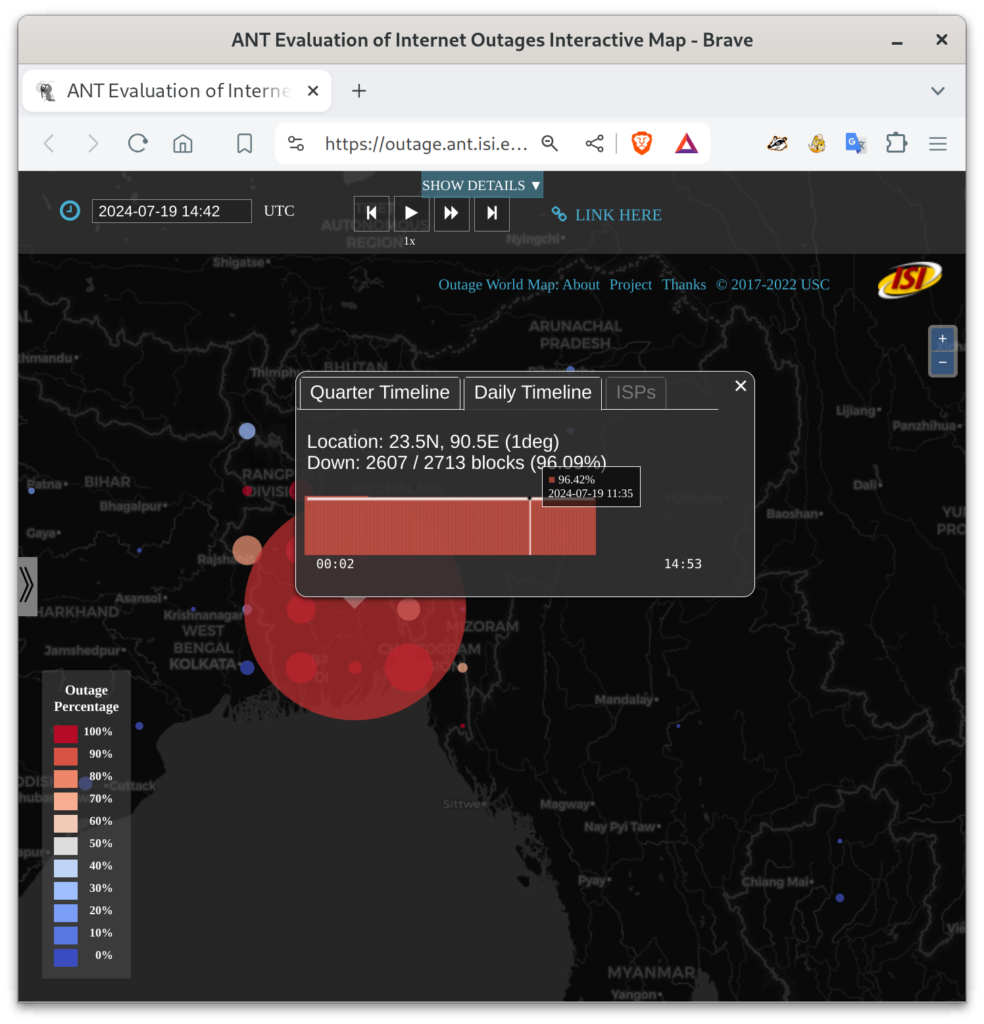
Update July 19 afternoon: USC/ISI posted an article about the Bangladeshi Internet outage and our work as ISI news, and an new NYT article about the protests.
The AP reports “A statement from the country’s Telecommunication Regulatory Commission said they were unable to ensure service after their data center was attacked Thursday by demonstrators, who set fire to some equipment. The Associated Press was not able to independently verify this.” However, the near-complete outage observed by Trinocular (as seen in the figures above) seems inconsistent with problems at a single datacenter.
Update July 19, 22:28Z: ISOC Pulse has a post about this outage, and reports that “In a press event on 18 July, Bangladesh minister for posts, telecommunications, and information technology, Zunaid Ahmed Palak confirmed that the government had ordered the shutdown. “
Update July 20: The country-wide outage continues.
Update July 21, 17:00Z: Although recent news reports suggest some government response to protests, the near-complete country-wide Internet outage continues.
Update July 22, 23:00Z: Another day with no externally visible change–all of Bangladesh remains inaccessible from outside.
Update July 23, 18:00Z: Beginning around 13:00Z (which 19:00 in Bangladesh), we see the first signs of Bangaldeshi networks coming back on-line! The figure below is as of 16:26Z and shows about half of the national networks reachable from outside the country.
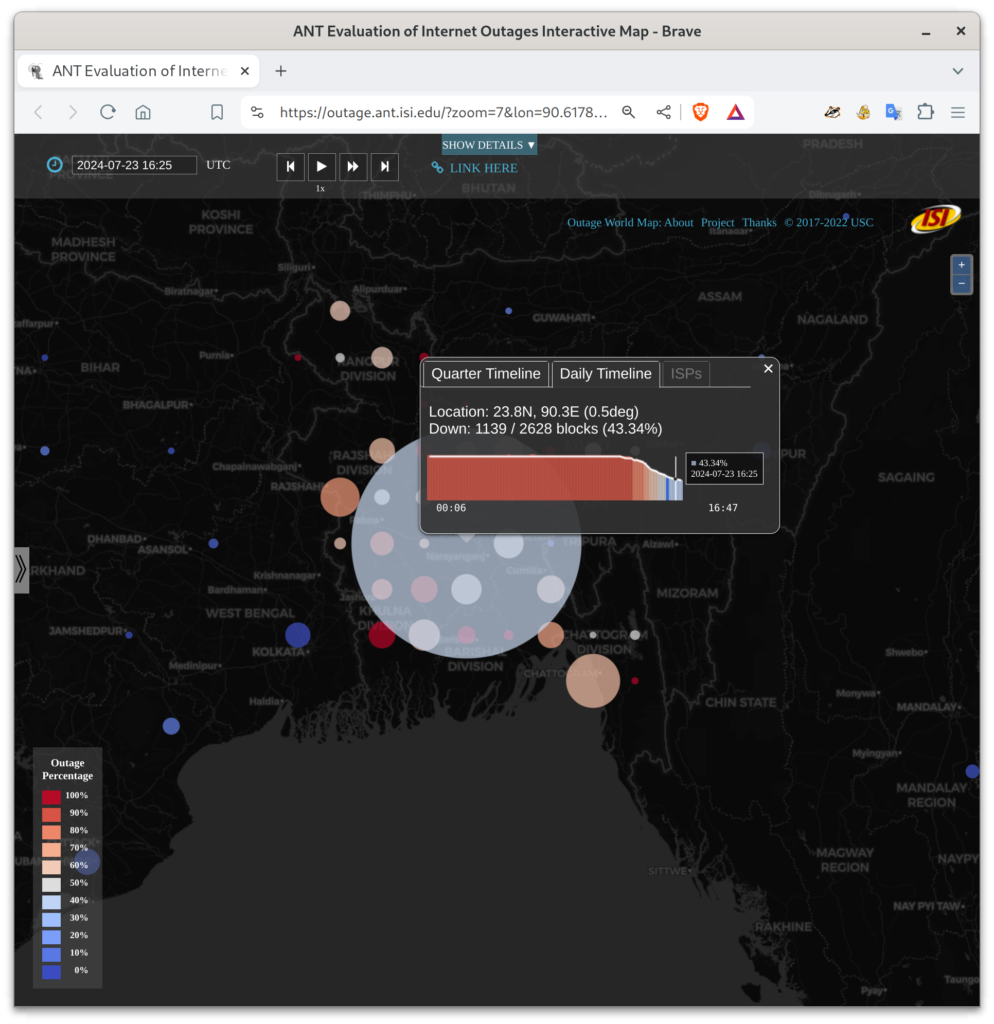
To add about the root cause, the Deccan Herald published an article from Reuters quoting Zunaid Ahmed Palak, junior information technology minister, as saying to reporters: “Mobile internet has been temporarily suspended due to various rumors and the unstable situation created…. on social media” on July 18. Today, Reuters quoted Palak as saying that “broadband internet would be restored by Tuesday night but [he] did not comment on mobile internet”. This statement is consistent with the country-wide outage we observed, and the prior statement suggests the outage was a request of the government.
Update July 24, 13:00Z (19:00 in Bangladesh): It looks like nearly all Bangladeshi networks are now back online.
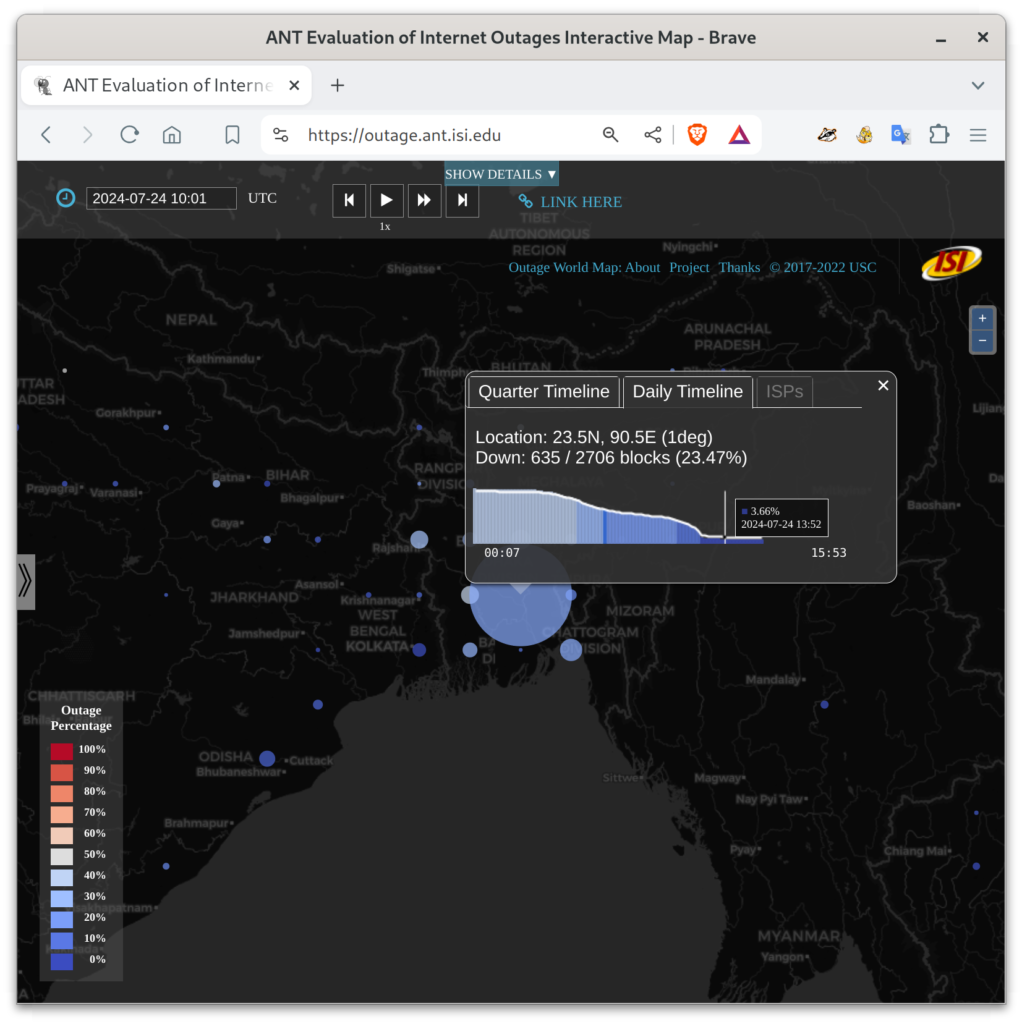
Update July 25: The July 25 episode of The Briefing, an Australian news podcast, discussed the Bangladeshi outage and its impact, interviewing us about what we saw.
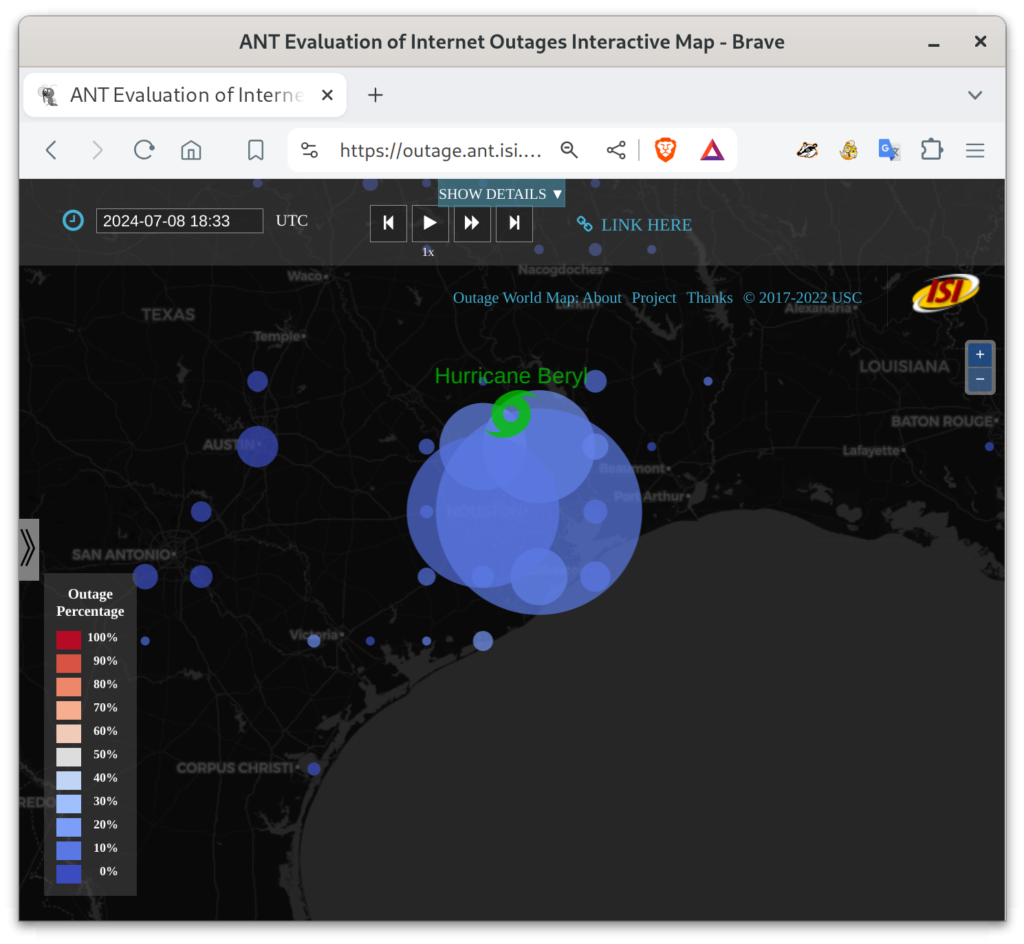
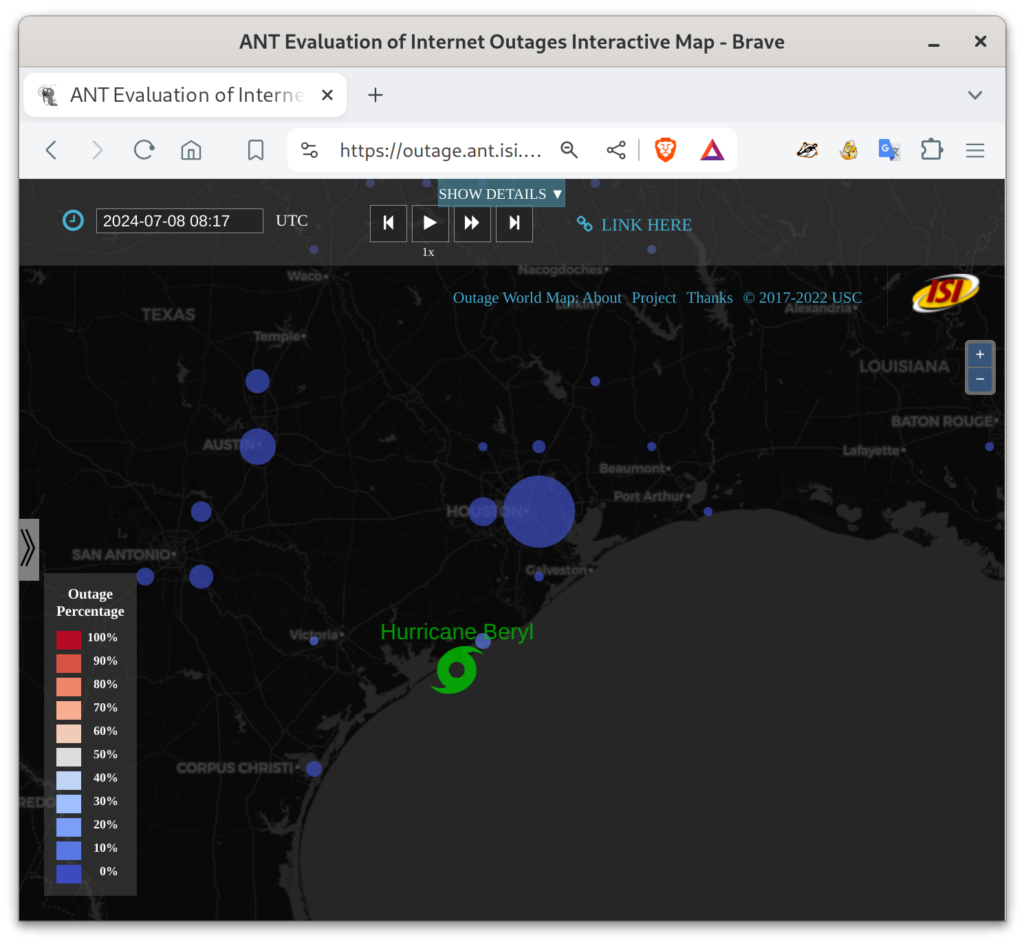

![Experiments showing educational ads for for-profit schools are disproportionately shown to Blacks at statistically significant levels. (from [Imana24a], figure 4).](https://ant.isi.edu/blog/wp-content/uploads/2024/06/Imana24a_icon-300x152.png)
